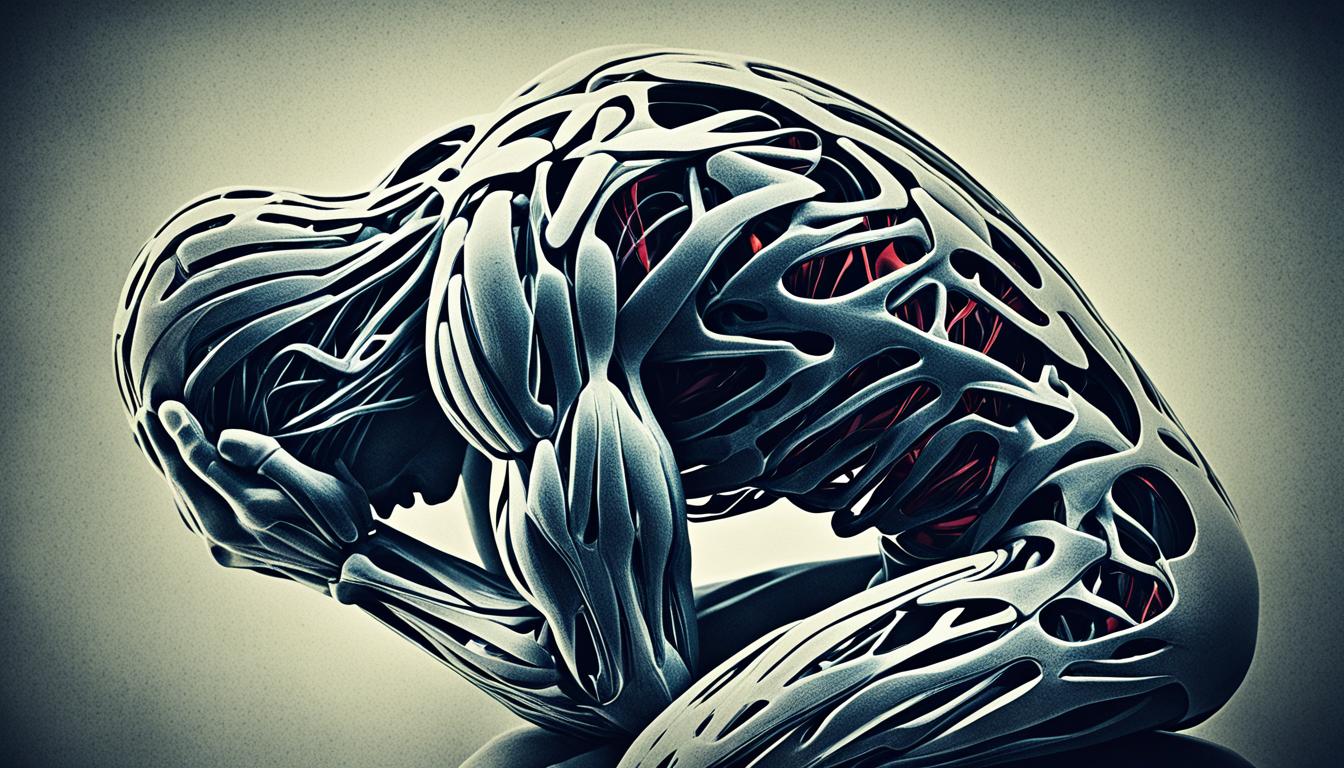Myofascial pain syndrome affects muscles and their surrounding connective tissue, known as fascia. It includes hard nodules called trigger points within tight muscle bands. These trigger points lead to pain, muscle weakness, and reduced movement.
Doctors are still learning about the exact cause of this syndrome. They think it might come from muscle injury, changes in muscle fibers due to trigger points, and issues with how the connective tissue works.
Diagnosing this syndrome involves a close physical exam to find trigger points and understand the patient’s symptoms. Treatments might involve pain management medications, injections in trigger points, or physical therapy.
In the last few years, stem cell therapy has shown promise as a treatment for chronic muscle pain from myofascial pain syndrome. Stem cells can become different cell types and help tissue heal. Still, more research is needed to confirm its benefits.
Key Takeaways:
- Myofascial pain syndrome has trigger points in the muscles.
- It causes pain, weakness, stiffness, and limits how much you can move.
- The exact cause is still a mystery, but it’s tied to muscle injury and fiber changes.
- To diagnose it, doctors check for trigger points and ask about symptoms.
- Experiments with stem cell therapy show it might help manage the pain.
Understanding Myofascial Pain Syndrome
Myofascial pain syndrome affects muscles and their surrounding tissue, the fascia. It leads to tender points that hurt when touched, causing pain and twitching. These are also known as trigger points and can make other parts of your body hurt, called referred pain.
People with this syndrome may feel muscle weakness, tingling, stiffness, and find it hard to move. These issues can make everyday life tough.
The exact cause of this syndrome is still a mystery. Yet, bad posture, stress, muscle overuse, repetitive jobs, and physical activity might all be factors.
Doctors check for tender and trigger points to diagnose this syndrome. It’s important they rule out other conditions with similar signs. This ensures the right treatment.
Treatments for myofascial pain may involve meds like painkillers and muscle relaxers to ease pain and cut down swelling. Injections into trigger points with anesthesia or steroids can also help. Physical therapy and tailored exercises can boost muscle health and movement.
| Common Symptoms of Myofascial Pain Syndrome |
|---|
| Tender points |
| Muscle weakness |
| Tingling sensations |
| Stiffness |
| Decreased range of motion |
| Referred pain |
Managing symptoms is key, but understanding and tackling root causes is vital. A full plan involving good posture, managing stress, setting up workspaces right, and regular exercise can help stop problems in the future. This approach supports better health over time.
Innovative Stem Cell Therapy for Myofascial Pain Syndrome
Stem cell therapy is an exciting new way to treat myofascial pain syndrome. This is a condition that causes muscle pain and trigger points.
This therapy uses stem cells because they can change into different cell types. They help repair damaged tissue. Stem cell therapy is a non-invasive treatment. It works to reduce pain, boost body function, and make life better for those with myofascial pain syndrome.
More research is needed to confirm its long-term benefits. But, stem cell therapy shows a lot of promise. It could be a new way to manage pain. This approach gives hope to those who want alternatives to traditional treatments. It also opens doors to better managing chronic pain.

